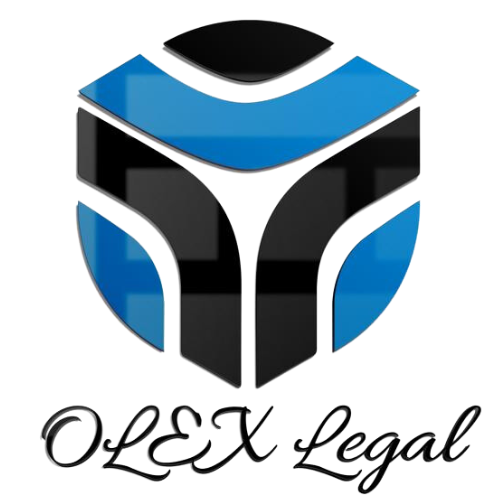
04 Dec Caveats, Liens, and Encumbrances in Real Estate Transactions
When it comes to property ownership and real estate transactions, few things are as important as understanding the legal claims that can affect a property. Among these claims are “caveats” and “liens”, terms that may sound intimidating but are crucial in the world of property law. In simple terms, a caveat is like a sign put up on a property saying, “Wait! Someone has a special interest here,” while a lien is more like a marker that says, “This property is collateral for money owed.” This article will guide you through what these terms mean, how they differ, and why they matter to anyone involved in buying, selling, or managing property.
Let’s start by demystifying these legal concepts, and highlighting why they’re vital to consider whether you’re a homeowner, a prospective buyer, or even a real estate professional.
What is a Caveat?
Imagine you’re interested in buying a house. You find the perfect one, but there’s a small sign on the title documents that warns you: someone else claims to have a stake in this property. That warning sign is what we call a “caveat.”
In legal terms, a caveat is a notice placed on the title of a property. It’s a way to alert everyone that someone out there — maybe a person or an organization — has something to say about the property. They might claim to have a financial interest, like a mortgage or a part of the property’s value. Or they might even say the property is partly theirs.
Anyone with a legitimate interest in the property can place a caveat. This could be the owner who wants to ensure their rights are protected, a bank that’s lent money against the property, or even a government body that has some claim on it.
The key point is this: if there’s a caveat on a property you’re interested in, you can’t just ignore it. You need to understand what it means, who’s made the claim, and what their interest is. This needs to be resolved before you can confidently purchase the property. Think of a caveat as a red flag, telling you to slow down and pay attention before proceeding with a purchase.
What is a Lien?
Now, let’s talk about a lien. Think of a lien as a financial anchor that’s attached to a property. It’s a legal claim that says, “The owner of this property owes money, and this property is the guarantee that they’ll pay up.”
A lien can come about in several ways. For example, if a homeowner hires a contractor to build a deck, but then doesn’t pay for the work, the contractor can place a lien on the property. This means the contractor has a legal right to receive the amount owed, and the property itself becomes a form of collateral. If the homeowner wants to sell or refinance their house, they’ll have to deal with the lien first — usually by paying off the debt.
Government bodies can also place liens on properties. If a homeowner fails to pay their taxes, the government may issue a tax lien, which is the same idea: the property is held as a guarantee against the debt.
Liens are powerful tools for creditors because they don’t just go away. They stick to the property like glue, and if the debt isn’t settled, the lienholder can even force the sale of the property to get their money back. It’s like a bookmark in the property’s financial story, marking a spot that says, “We have unfinished business here.”
Differences Between Caveats and Liens
Understanding the distinction between caveats and liens is critical when navigating property law. While both are warnings attached to the title of a property, they serve different purposes and carry different legal weight.
A caveat is a pre-emptive alert. It doesn’t necessarily mean that money is owed, but it signals that someone has a legally recognized interest or right in the property. This interest could be due to an ongoing legal dispute, an inheritance claim, or a financial agreement like a mortgage. Essentially, it’s a way to freeze the situation until the claim is sorted out, ensuring no major changes like sale or transfer of the property can happen without addressing the caveat.
On the other hand, a lien is a direct claim for money owed. Unlike a caveat, it’s not just a signal—it’s a blockade. It says that the property is directly tied to a debt and can be sold off if the debt isn’t paid. For instance, if a homeowner doesn’t pay their contractor, the contractor can’t just claim an interest—they can use the lien to eventually force a sale of the property to get their payment.
The most significant difference lies in the nature of the claim. A caveat suggests, “Pay attention, there’s something you need to know before this property changes hands,” whereas a lien declares, “This property is held against a debt, and action will be taken if the debt isn’t settled.”
In terms of impact, both caveats and liens must be disclosed during the sale process and can complicate or even block the transaction until resolved. They serve as critical checks in the property’s history, ensuring that all claims and debts are accounted for before new ownership takes place.
Encumbrances in Property Law
In the world of property ownership, there’s a term that covers all sorts of claims, restrictions, and responsibilities attached to a property — encumbrances. An encumbrance is like a backpack on a property’s shoulders; it can contain anything from a lien or caveat to less obvious things like zoning laws or public pathway rights.
Encumbrances are important to know about because they can affect how you use your property and its value. If there’s a mortgage on the property, that’s an encumbrance. If there’s an easement, which means someone else has the right to use a part of your land (like a driveway or utility company), that’s also an encumbrance.
Some encumbrances, like a lien for unpaid taxes, are financial and need to be paid off. Others, like an easement for power lines, don’t require payment but restrict what you can do on certain parts of your land. Encumbrances can be complex, woven into the legal and physical fabric of the property, and they stay with the property even when it changes hands.
Understanding encumbrances is key to making informed decisions about buying, selling, or using property. It’s all about knowing exactly what you’re getting into and recognizing that a property’s title can carry with it a history of claims and responsibilities that need to be acknowledged and addressed.
Legal and Financial Implications
When a property has a lien or a caveat attached to it, it’s not just a matter of paperwork; these notices have real legal and financial consequences. They are like markers that highlight potential roadblocks for current and future owners.
Let’s break down the implications:
Legal Implications:
- Transfer of Ownership: Caveats and liens can act as a speed bump, slowing down or even halting the sale of a property. If you’re buying, you don’t want to inherit someone else’s legal battles or debts.
- Disputes: A caveat could be a signal that there’s a dispute over who really owns the property or has rights to it. This can lead to legal battles that can be lengthy and costly.
- Compulsory Sale: If a debt secured by a lien isn’t paid, the creditor can force a sale of the property. This is a legal power move that can strip ownership from the debtor.
Financial Implications:
- Value: Both caveats and liens can affect a property’s market value. Buyers often view them as warning signs and may demand a lower price or walk away altogether.
- Credit: If you’re the owner, having a lien on your property can also impact your credit score and make it harder to borrow money or refinance your mortgage.
- Costs: Resolving these issues can be expensive. You might need to pay off debts or hire legal help to clear up claims against your property.
Addressing these issues often requires negotiation and legal assistance. It may involve settling debts, resolving ownership disputes, or going to court. The key is to deal with them before they become larger problems, especially when planning to sell or transfer property. Being proactive can save a lot of time, money, and stress in the long run.
Case Studies and Legal Precedents
Real-life scenarios and legal cases can provide valuable insights into how caveats and liens play out in the real world. Let’s consider a few hypothetical case studies that highlight the importance of understanding these legal tools:
Case Study 1: The Unpaid Contractor
- John hires a contractor to renovate his kitchen. The contractor completes the work, but John encounters financial difficulties and fails to pay. The contractor then files a lien on John’s property. When John tries to refinance his mortgage to resolve his financial issues, he discovers that he cannot proceed due to the lien. He must either pay the contractor or risk legal action that could force the sale of his home.
Case Study 2: The Inherited Property
- Maria inherits a house from her aunt. She decides to sell it but learns there is a caveat on the property from a relative contesting the will. The sale cannot proceed until the dispute is resolved. Maria must now enter a legal process to prove her aunt’s will is valid and her ownership of the property is legitimate.
Conclusion
Understanding caveats, liens, and encumbrances is more than just legal jargon; it’s about grasping the potential challenges and responsibilities that come with property ownership. These legal claims can significantly impact your rights and responsibilities as a property owner, buyer, or seller.
In essence, caveats serve as a warning, alerting all parties that someone has a claim or interest in the property. They necessitate caution and investigation before any property transaction. Liens, on the other hand, are direct claims on a property for payment of a debt. They can lead to serious consequences, including the forced sale of the property, if not addressed. Understanding these concepts is crucial for anyone involved in real estate, whether you’re a first-time homebuyer, a seasoned investor, or just trying to manage your property rights effectively.
Disclaimer: This article is provided by OLEX Legal for informational purposes only and is not legal advice. The information is not guaranteed to be correct, complete, or up-to-date, and should not be considered legal advice for any individual case or situation.
This content does not create an attorney-client relationship. The legal field is dynamic, and content may not reflect recent legal changes. Opinions expressed are those of the authors and may not represent the firm’s views.
For personal legal advice, please contact OLEX Legal directly.



















































